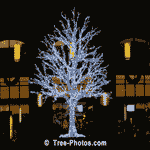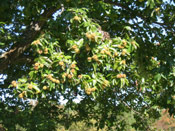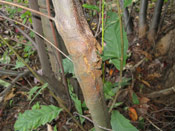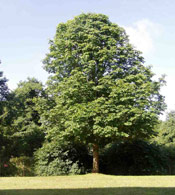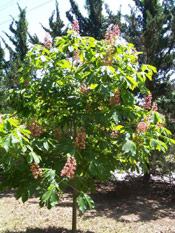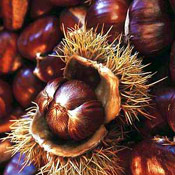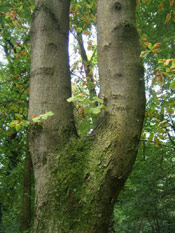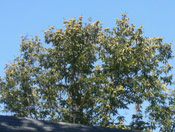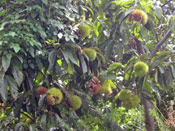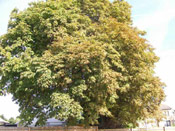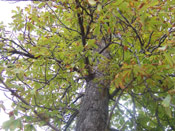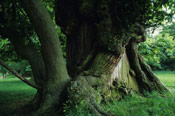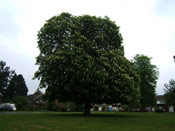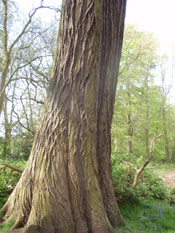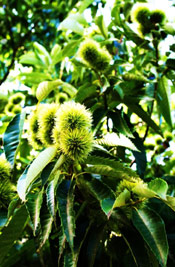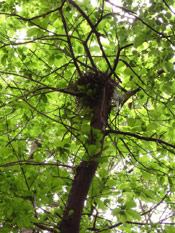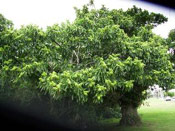Chestnut Tree Pictures
Chestnut Tree Pictures Welcome
Chestnut Tree Photos Gallery you will find lots of nice pictures of chestnut trees.
You will also find a lot of wonderful information on chestnut trees, including information about the chestnut tree species, planting information, and much more.
This is valuable and useful information that can help you to learn more about the chestnut tree.
Chestnut Tree Images
Full size each chestnut tree picture you like, just click on the chestnut image to get the chestnut photo to enlarge.
Enjoy theses pictures of the Chestnut Tree.
Chestnut Tree Pictures
Types of Chestnut Trees: Different Chestnut Tree Types
- American Chestnut Tree, chestnuts are sweeter than other varieties
- Chinese Chestnut Tree, need to plant two trees for pollination
- Chinquapin Chestnut Tree, Castanea pumila dwarf chestnut tree
- Horse Chestnut Tree, also known as conker tree
- Japanese Chestnut Tree, native to Japan nuts have poor flavor
Chestnut Tree, Facts and Information on Chestnut Trees
Here is some detailed information on the chestnut tree.
Chestnut (Castanea), some species called chinkapin or chinquapin, is a genus of eight or nine species of deciduous trees and shrubs in the beech family Fagaceae, native to temperate regions of the Northern Hemisphere. The name also refers to the edible nuts they produce. The chestnut belongs to the same Fagaceae family as the oak and beech. There are four main species, commonly known as European, Chinese, Japanese and American chestnuts:
European species sweet chestnut (Castanea sativa) (also called "Spanish chestnut" in the US) is the only European species of chestnut. Asiatic species Castanea crenata (Japanese chestnut), Castanea mollissima (Chinese chestnut), Castanea davidii (China), Castanea henryi (Chinese chinkapin, also called Henry's chestnut – China) and Castanea seguinii (also called Seguin's chestnut - China). American species These include Castanea dentata (American chestnut - Eastern states), Castanea pumila (American- or Allegheny chinkapin, also known as "dwarf chestnut" - Eastern states), Castanea alnifolia (Southern states), Castanea ashei (Southern states), Castanea floridana (Southern states) and Castanea paupispina (Southern states).
Chestnuts should not be confused with horse chestnuts (genus Aesculus), which are unrelated to Castanea and are named for producing nuts of similar appearance but of no notable edibility. Nor should they be confused with water chestnut (family Cyperaceae), which are also unrelated to Castanea and are tubers of similar taste from an aquatic herbaceous plant. Other trees commonly mistaken for the chestnut tree are the chestnut oak (Quercus prinus) and the American beech (Fagus grandifolia).
Chestnut trees are of moderate growth rate (for the Chinese chestnut tree) to fast-growing for American and European species.
Chestnuts produce a better crop when subjected to chill temperatures during the dormant period. Frosts and snowfalls are beneficial rather than harmful to the trees.
The optimum rainfall for chestnut trees is 800 mm (31 in) or more per annum, ideally in even distribution throughout the year. Mulching during summer is recommended. Rainfall below 700 mm (28 in) per annum needs be complemented with, for example, a drip irrigation system. This should water the soil at the outer half of the circle formed by the drip line to encourage root growth.
Chestnuts are often added to animal fodder. A first soak in lime water removes their bitter flavour, then they are ground and mixed with the ordinary provender.
Chestnut is of the same family as oak, and likewise its wood contains many tannins. This renders the wood very durable, gives it excellent natural outdoor resistance, and saves the need for other protection treatment. It also corrodes iron slowly, although copper, brass or stainless metals are not affected.
Chestnut timber is decorative. Light brown in color, it is sometimes confused with oak wood. Both woods' textures are also similar. When in a growing stage, with very little sap wood, a chestnut tree contains more timber of a durable quality than an oak of the same dimensions. Young chestnut wood has proved more durable than oak for woodwork that has to be partly in the ground, such as stakes and fences.
The tree is noted for attracting wildlife. The nuts are an important food for jays, pigeons, wild boar,deer, and squirrels. Several insects, notably the chestnut weevil Curculio elephas, also feed on the seeds.
Thank you for visiting our Chestnut Tree Pictures page at Tree Pictures Online.com, please come back soon for more great tree pictures!
Pictures Sites
Fireplace Pictures -
Tree Pictures -
Gazebo Pictures -
Symbols & Their Meanings
Resume Samples -
Church Pictures -
Manufactured Home Pictures
Natural Log Siding -
Shadow Puppets -
Caribbean Islands
Play Touch Games -
Waterfall Pictures
Make Hot Pictures - Job Application Forms
![]()


